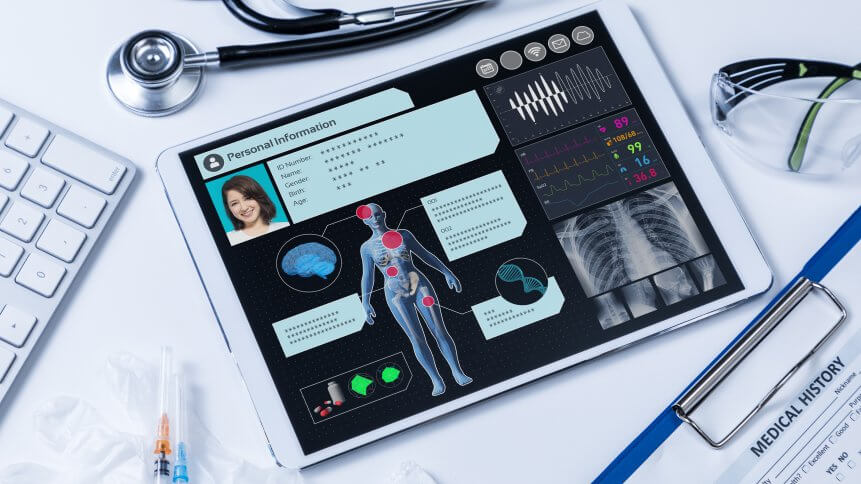Three (more) disruptive technologies in healthcare

Its constant need to lower costs, enhance quality and make operations more efficient means the healthcare industry is constantly in the vanguard of new tech adoption.
In this sector, tech adoption can literally have life-saving potential. The industry is a pioneer of scientific discovery; it’s an investor and creator of highly-specialized, meticulously-crafted equipment in its own right– but it’s also keenly receptive to the technology and innovation advancing business and society as a whole.
Previously on TechHQ, we’ve covered how 3D printers and VR are being used in the healthcare sector. Below, we explore how three more developments are being deployed in the sector.
# 1 | Blockchain
Given the vast amount of data this industry deals with every day, storing all efficiently can be challenging, especially owed to its sensitive and persona nature. Research data is extremely valuable too, especially if it’s related to groundbreaking drugs– losing it could result in counterfeit drugs flooding the market.
To prevent medical and research data from being stolen, the healthcare industry may use blockchain to store all of this. There are many use cases for blockchain in various parts of this industry; storing patient data, research data, even preventing researchers from adding fraudulent data to back up their clinical trials.
Since the data stored on blockchain isn’t tamperable, hence nothing can be deleted, modified or encrypted to be misused by irresponsible parties.
# 2 | Mobile tech
Being an industry that deals with vast amounts of data, storing it all locally on computers can seem very redundant. This is how electronic medical records (EMR) systems used to operate previously and these systems connected with each other via intranet.
Now with cloud computing on the rise and mobile applications proving to be the most convenient solution, EMRs are now being developed with mobile capabilities. EMR systems like DrChrono integrate multiple functions like patient records storage, billing and lab report access all in one system.
Now doctors, nurses and lab scientists no longer need to run to each other to share information, they’re all accessible via an iPad.
YOU MIGHT LIKE

A personalized dose: 3D printed medicine in big pharma
# 3 | 5G
Sophisticated technology like blockchain, integrated EMRs and VR would require stable connections that can transfer huge packets of data seamlessly without any interruptions. Now with 5G on the rise, this could be a possibility.
By providing massive device connectivity seamlessly with ultra-low latency, 5G can help imaging applications like MRIs and CTs to transfer their extremely large files to doctors quickly so they could review it with haste. This not only saves time, but it also allows them to detect any abnormalities in their patient’s imaging results quickly.
Remote patient monitoring via wearable tech will also be more efficient thanks to the reliable connection it provides between doctors and their patients.
For doctors, patients’ wellbeing come first, whereby for researchers, research data credibility is utmost important. Taking these into consideration and the above-average yearly commitments service providers charge for this tech, it would be considered a worthwhile investment for clinics and research labs that care about quality above anything else.









